Heads up! 2 large asteroids to safely pass Earth this week
Heads up! 2 large asteroids will safely pass Earth this week. Look for them from June 27 to 30 with a telescope. Check out the finder charts here.
The post Heads up! 2 large asteroids to safely pass Earth this week first appeared on EarthSky.
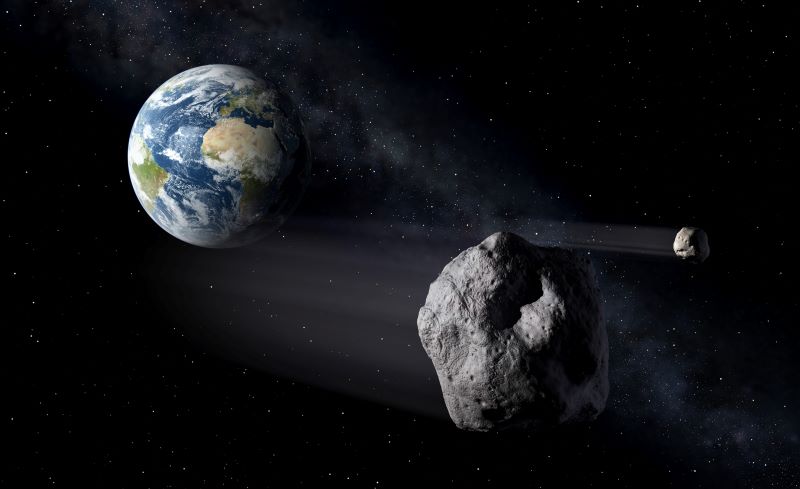
2 large asteroids to pass near Earth
Two asteroids will safely pass our planet this week, and both are large enough to spot in small telescopes. In an astronomical coincidence, they’ll appear best on the same night, June 28. Asteroid 2011 UL21 is one of the largest near-Earth asteroids visible in amateur telescopes this year, at 1.4 miles (2.3 km) wide. That makes it larger than 99% of all known near-Earth objects. However, it will pass at a safe distance of 4,122,350 miles (6,634,279 km) from Earth’s surface, or about 17 times farther than the moon on June 27.
The other asteroid, newly discovered 2024 MK, is a bit smaller, between 400 and 840 feet (122 and 256 m) in diameter. But it will pass closer to us than the moon on June 29.
No, there is absolutely no danger from any of the asteroids passing this week, or from any known space rock so far.
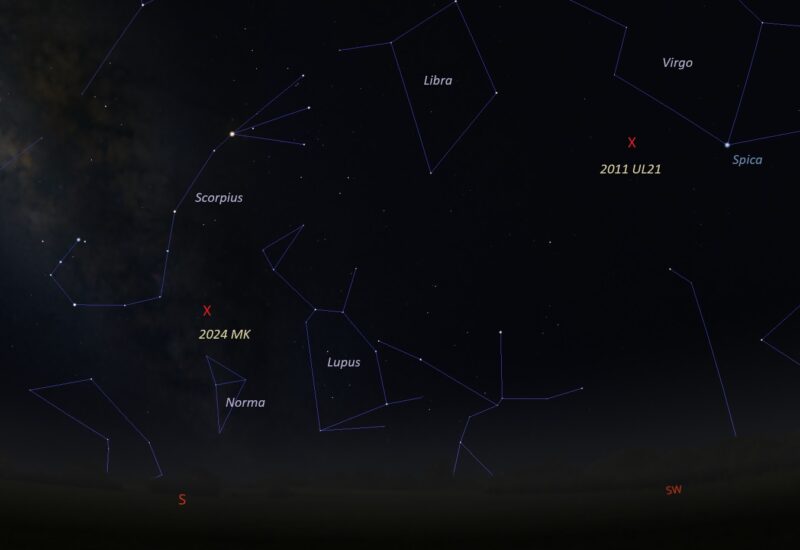
Asteroid 2011 UL21
Asteroid 2011 UL21 is a huge space rock. As you might have guessed from its name, we’ve known about it since 2011. Scientists discovered it in October 2011 from the Catalina Sky Survey in Tucson, Arizona. However, this will be its closest approach in its orbit since its discovery. Asteroid 2011 UL21 will pass closest to our planet on June 27 around 4:16 p.m. EDT (20:16 UTC).
But if it’s cloudy on June 27, never fear. Asteroid 2011 UL21 will be easily observable in small telescopes from June 27 to 30. In fact, it appears brightest on Friday, June 28. Then, in 65 years, the large space rock will return even closer to Earth on June 25, 2089.
In fact, due to its large size and amazing speed of 57,937 miles per hour (or 25.9 km per second) relative to Earth, you’ll easily be able to detect the asteroid’s motion against the stars in telescopes of 6-to-8 inches and larger.
Star charts for asteroid 2011 UL21
And, although both space rocks will be easily visible in small telescopes, they will not be bright enough for you to spot them with the unaided eye. Here are finder charts for asteroid 2011 UL21, which will be passing through Virgo.
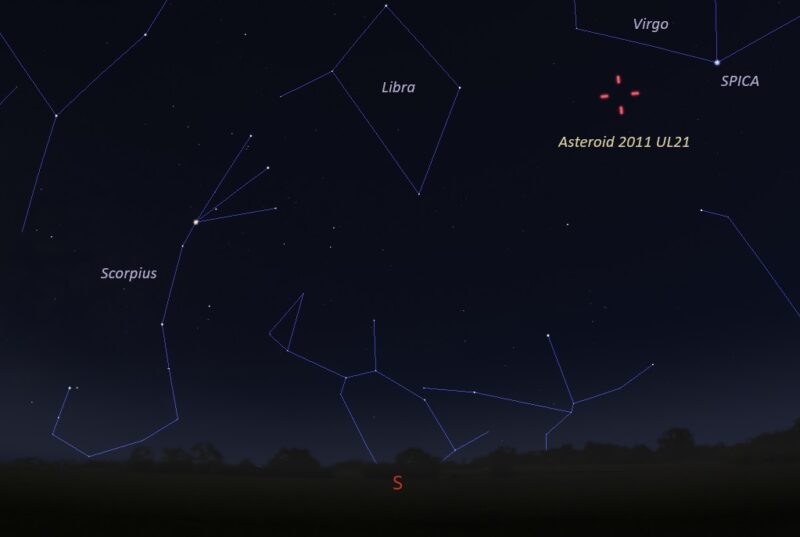
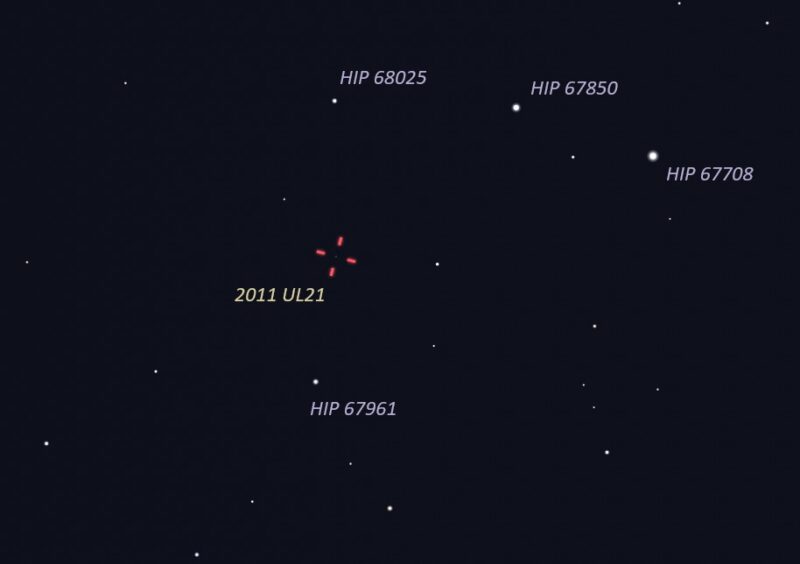
Asteroid 2024 MK
While it’s taken years from asteroid 2011 UL21’s discovery to its closest flyby, asteroid 2024 MK is another story. Scientists discovered 2024 MK on June 16, 2024, with ATLAS-Sutherland in South Africa. And now, just a couple weeks later, it’s making its closest pass to Earth. Asteroid 2024 MK will pass Earth at about 77% the Earth-moon distance. And while it is much smaller than 2011 UL21, a rock this size would still do considerable damage if it struck Earth. For comparison, the space rock that disintegrated over Chelyabinsk in Russia in 2013 was about 1/5 to 1/10 of the size of 2024 MK.
Closest approach of asteroid 2024 MK occurs on June 29, 2024, at 9:50 am EDT (13:50 UTC). However, the asteroid appears brightest on Friday, June 28. Coincidentally, it’s the same night as 2011 UL21 appears brightest.
One caveat: Asteroid 2011 UL21 will be well positioned in the sky for observers in the U.S. and for observers in mid north latitudes, as well as for observers in the Southern Hemisphere. However, asteroid 2024 MK will be low in the south direction during closest approach. Thus, this second asteroid (2024 MK) will be best for observers in the southern U.S., as well as in Central America, the Caribbean, South America and the Southern Hemisphere in general.
Asteroid 2024 MK will be higher in the sky on the next night (June 29) for observers in all U.S. It will still be observable in small telescopes, just somewhat fainter than June 28.
Finder charts for 2024 MK
Here are finder charts for 2024 MK for June 28.
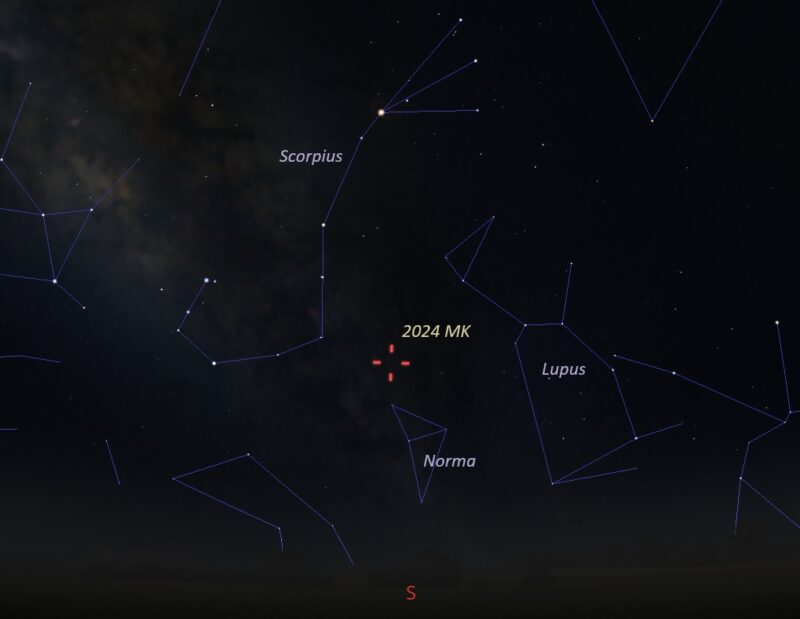
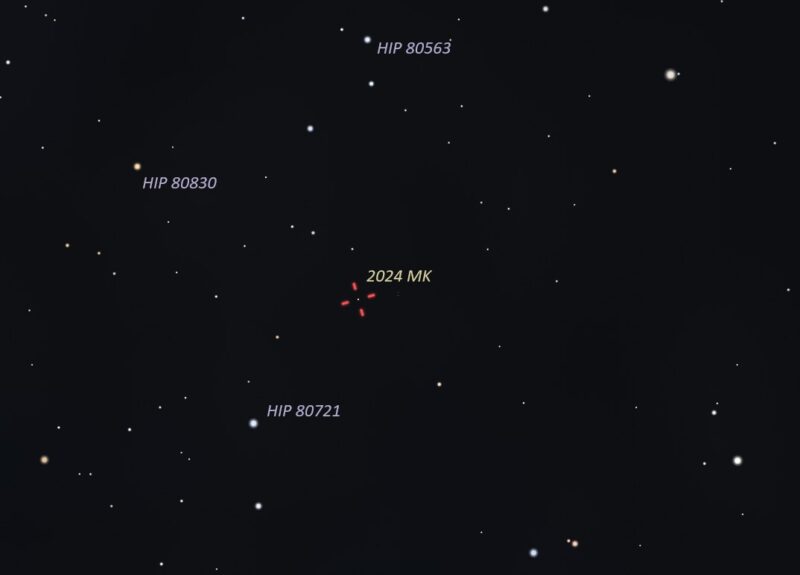
And here are finder charts for 2024 MK for June 29.

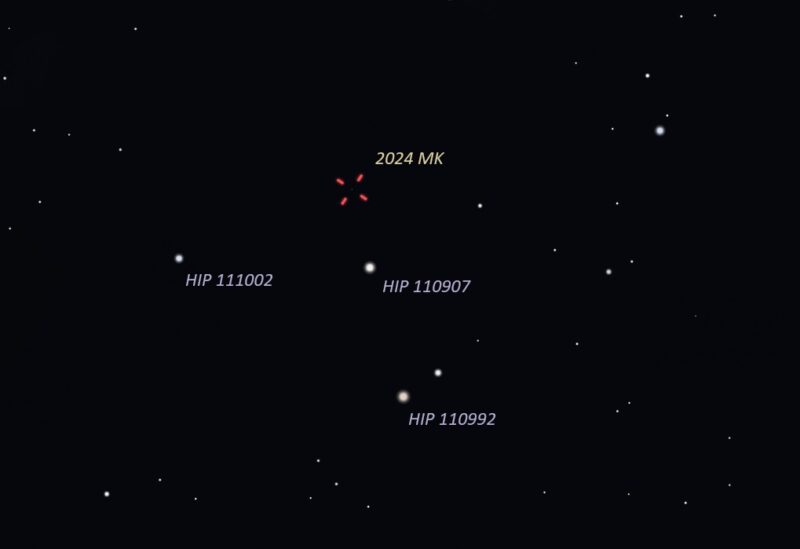
Professional astronomers will track the 2 large asteroids
NASA’s Goldstone radar in California will observe asteroid 2011 UL21 from June 26 to July 3, 2024. Overall, scientists have found that about 2/3 of near-Earth asteroids this large with rotation periods of less than three hours are binary systems. So there’s a good chance 2011 UL21 has a companion, or asteroid moon, which might be revealed during this pass.
The Minor Planet Center has classified 2011 UL21 as a Potentially Hazardous Asteroid due to its large size and nearness to Earth.
Meanwhile, radar observations for asteroid 2024 MK (also designated as a Potentially Hazardous Asteroid) will occur on June 30, July 1 and July 2.
Bottom line: Two large asteroids will safely pass Earth this week. Look for them from June 27 to 30 with a telescope.
The post Heads up! 2 large asteroids to safely pass Earth this week first appeared on EarthSky.
